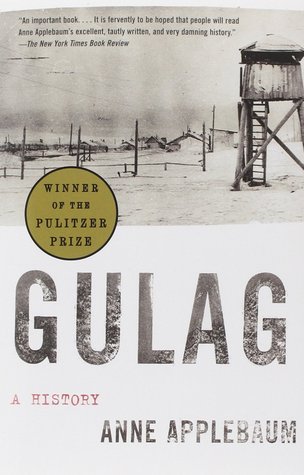More on this book
Community
Kindle Notes & Highlights
the notion that some types of people are superior to other types of people was common enough in Europe at the beginning of the twentieth century. And this, finally, is what links the camps of the Soviet Union and those of Nazi Germany in the most profound sense of all: both regimes legitimated themselves, in part, by establishing categories of “enemies ” or “sub-humans” whom they persecuted and destroyed on a mass scale.
The Gulag also contained a wide variety of camps, from the lethal gold mines of the Kolyma region to the “luxurious” secret institutes outside Moscow, where prisoner scientists designed weapons for the Red Army.
The Bolsheviks were indeed wildly unprepared. As a result, most of their early decisions, including the creation of the one-party state, were taken to suit the needs of the moment. Their popular support was indeed weak, and almost immediately they began to wage a bloody civil war, simply in order to stay in power.
From the very earliest days of the new Soviet state, in other words, people were to be sentenced not for what they had done, but for who they were.
this particular category of prisoner bothered Lenin because, like all leaders of exclusive sects, he reserved his greatest hatred for apostates.
The prisoners worked cutting trees, with no breaks, no respite, and little food. Desperate for a few days’ rest, they cut off their hands and feet. According to Kiselev, Potapov kept these “pearls” preserved in a large pile and showed them to visitors,
We do not know, in fact, whether he wrote what he did out of naïveté, out of a calculated desire to deceive, or because the censors made him do it.11 Whatever his motivations, Gorky’s 1929 essay on Solovetsky was to become an important foundation stone in the forming of both public and official attitudes to the new and far more extensive system of camps which were conceived in that same year.
Within an incredibly short period of time, rural commissars forced millions of peasants to give up their small landholdings and to join collective farms, often expelling them from land their families had tilled for centuries. The transformation permanently weakened Soviet agriculture, and created the conditions for the terrible, devastating famines in Ukraine and southern Russia in 1932 and 1934—famines that killed between six and seven million people.18 Collectivization also destroyed— forever—rural Russia’s sense of continuity with the past.
resisters were labeled kulaks, or wealthy peasants,
the regime deported most of them. Between 1930 and 1933, over two million peasant kulaks were exiled to Siberia, to Kazakhstan, and to other underpopulated regions of the Soviet Union, where they lived out the rest of their lives as “special exiles,” forbidden to leave their exile villages. A further 100,000 were arrested, and wound up in the Gulag.
Even by the low standards of social realism, the book that emerged from their efforts—Kanal imeni Stalina (The Canal Named for Stalin)—is an extraordinary testament to the corruption of writers and intellectuals in totalitarian societies.
The camps themselves disappeared from maps.


